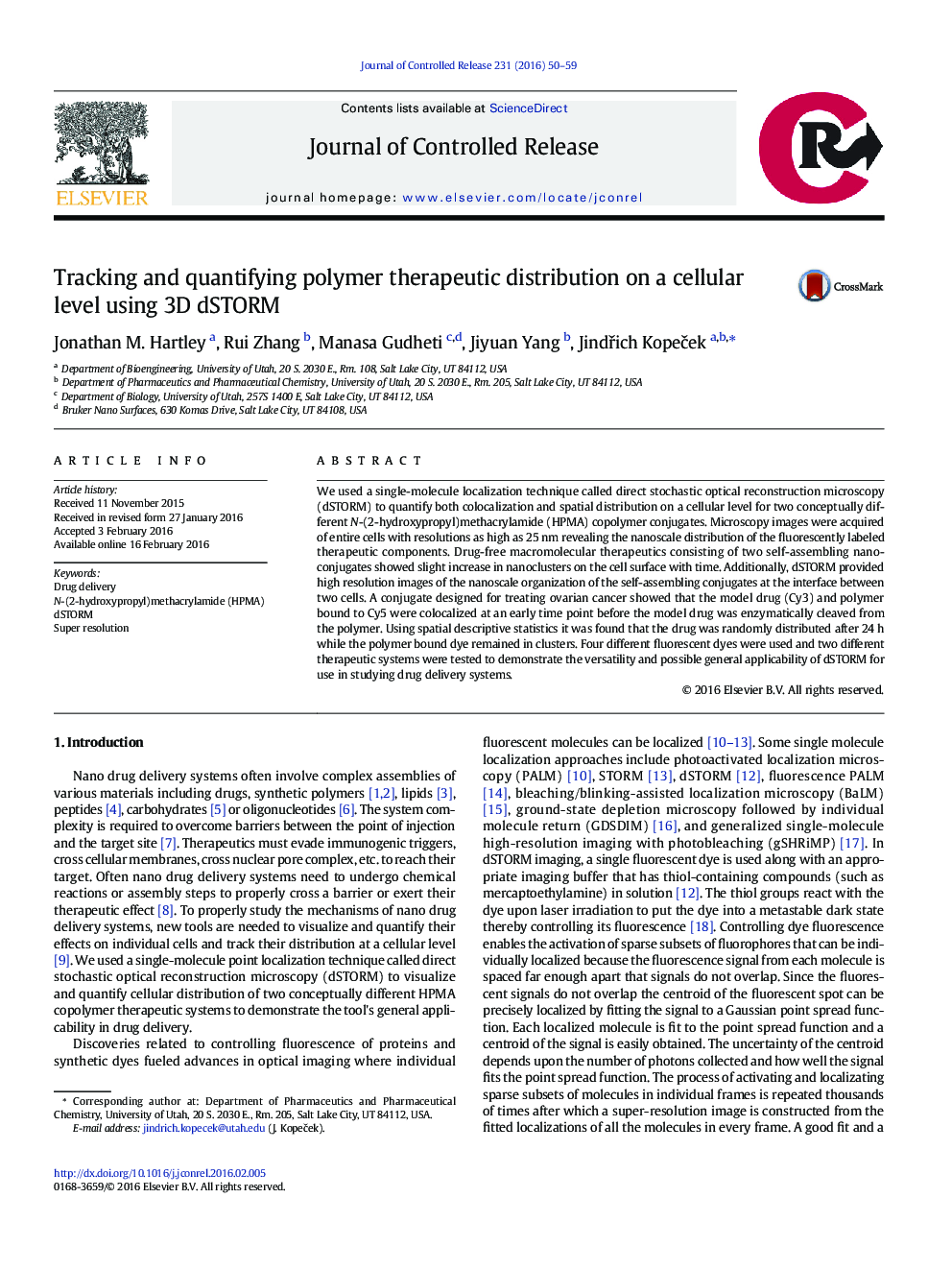| Article ID | Journal | Published Year | Pages | File Type |
|---|---|---|---|---|
| 1423526 | Journal of Controlled Release | 2016 | 10 Pages |
We used a single-molecule localization technique called direct stochastic optical reconstruction microscopy (dSTORM) to quantify both colocalization and spatial distribution on a cellular level for two conceptually different N-(2-hydroxypropyl)methacrylamide (HPMA) copolymer conjugates. Microscopy images were acquired of entire cells with resolutions as high as 25 nm revealing the nanoscale distribution of the fluorescently labeled therapeutic components. Drug-free macromolecular therapeutics consisting of two self-assembling nanoconjugates showed slight increase in nanoclusters on the cell surface with time. Additionally, dSTORM provided high resolution images of the nanoscale organization of the self-assembling conjugates at the interface between two cells. A conjugate designed for treating ovarian cancer showed that the model drug (Cy3) and polymer bound to Cy5 were colocalized at an early time point before the model drug was enzymatically cleaved from the polymer. Using spatial descriptive statistics it was found that the drug was randomly distributed after 24 h while the polymer bound dye remained in clusters. Four different fluorescent dyes were used and two different therapeutic systems were tested to demonstrate the versatility and possible general applicability of dSTORM for use in studying drug delivery systems.
Graphical abstractFigure optionsDownload full-size imageDownload high-quality image (90 K)Download as PowerPoint slide
